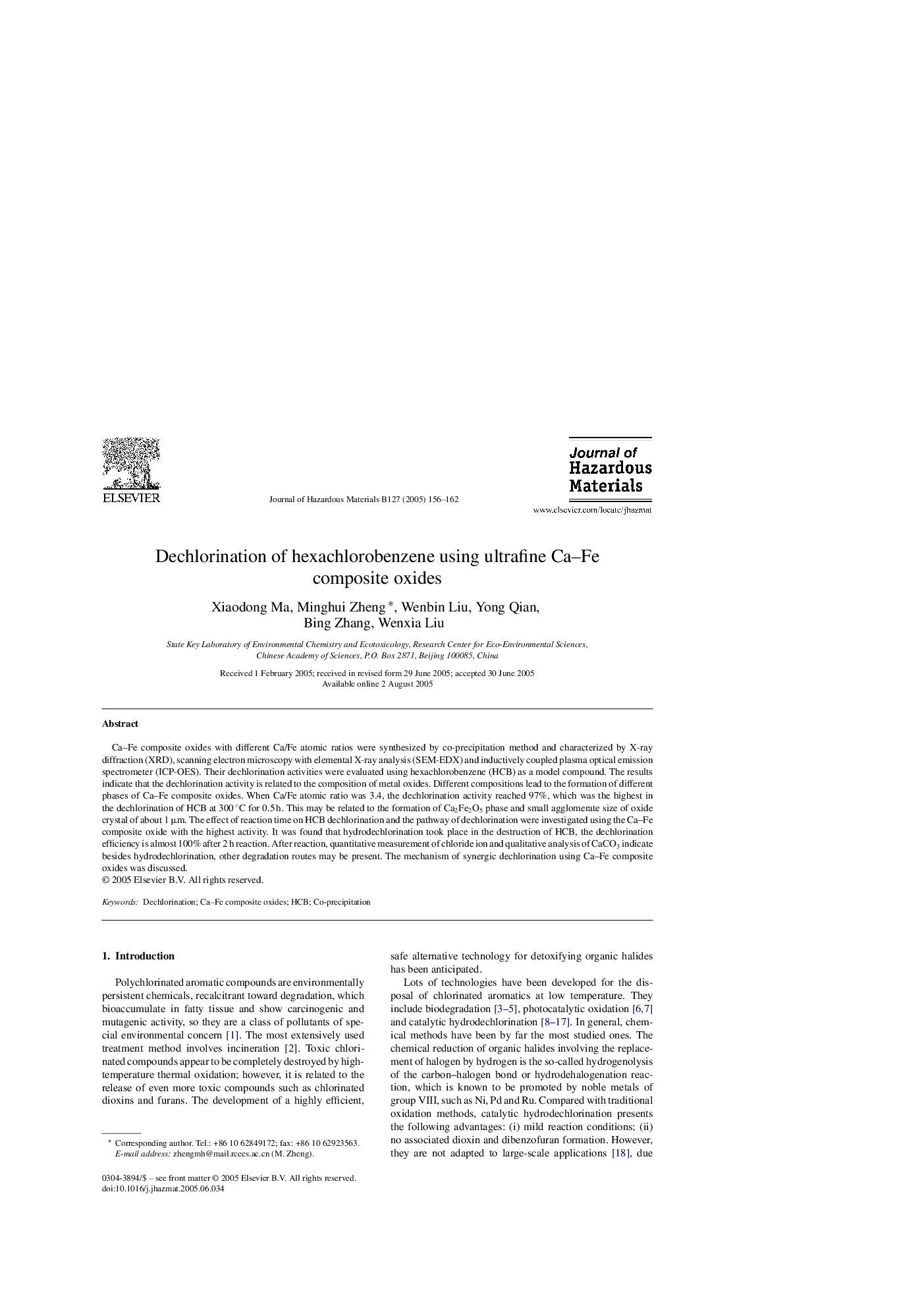| Article ID | Journal | Published Year | Pages | File Type |
|---|---|---|---|---|
| 9674071 | Journal of Hazardous Materials | 2005 | 7 Pages |
Abstract
Ca-Fe composite oxides with different Ca/Fe atomic ratios were synthesized by co-precipitation method and characterized by X-ray diffraction (XRD), scanning electron microscopy with elemental X-ray analysis (SEM-EDX) and inductively coupled plasma optical emission spectrometer (ICP-OES). Their dechlorination activities were evaluated using hexachlorobenzene (HCB) as a model compound. The results indicate that the dechlorination activity is related to the composition of metal oxides. Different compositions lead to the formation of different phases of Ca-Fe composite oxides. When Ca/Fe atomic ratio was 3.4, the dechlorination activity reached 97%, which was the highest in the dechlorination of HCB at 300 °C for 0.5 h. This may be related to the formation of Ca2Fe2O5 phase and small agglomerate size of oxide crystal of about 1 μm. The effect of reaction time on HCB dechlorination and the pathway of dechlorination were investigated using the Ca-Fe composite oxide with the highest activity. It was found that hydrodechlorination took place in the destruction of HCB, the dechlorination efficiency is almost 100% after 2 h reaction. After reaction, quantitative measurement of chloride ion and qualitative analysis of CaCO3 indicate besides hydrodechlorination, other degradation routes may be present. The mechanism of synergic dechlorination using Ca-Fe composite oxides was discussed.
Keywords
Related Topics
Physical Sciences and Engineering
Chemical Engineering
Chemical Health and Safety
Authors
Xiaodong Ma, Minghui Zheng, Wenbin Liu, Yong Qian, Bing Zhang, Wenxia Liu,
